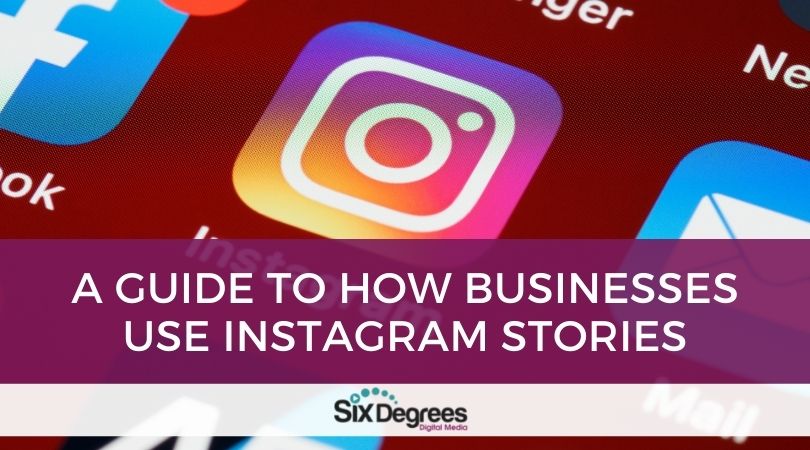Content Categories and Themes: Crafting a Well-Balanced Calendar
Creating a year’s worth of social media content begins with structuring your posts around well-defined content categories and themes. This not only keeps your content diverse but also aligns it with your audience’s interests and your business goals. Let’s dive into this essential step:
- Define Your Content Categories:
- Product or Service Spotlight: Showcase your offerings with high-quality images, videos, and descriptions. Highlight features, benefits, and customer testimonials.
- Educational Content: Share industry insights, how-to guides, and tips that provide value to your audience. Establish your brand as a knowledgeable authority.
- Entertaining Content: Keep things fun with memes, humor, or engaging stories that entertain your followers while staying relevant to your brand.
- Behind-the-Scenes: Offer a sneak peek into your company culture, daily operations, or team members’ stories to humanize your brand.
- User-Generated Content: Encourage customers to share their experiences with your products or services. Repost their content to build trust and authenticity.
- Craft Content Themes:
- Seasonal Themes: Align your content with seasons, holidays, or special events relevant to your industry. For instance, a gardening store might focus on spring planting tips in March.
- Weekly Features: Designate specific days for recurring content, such as “Throwback Thursday” for sharing memorable moments or “Motivation Monday” for inspirational quotes.
- Customer Stories: Share success stories, testimonials, or case studies that highlight how your product or service has positively impacted customers.
- Industry Insights: Stay up-to-date with industry trends and share your insights or predictions. For example, a tech company could discuss emerging technologies.
- Maintaining Balance:
- Ensure a mix of content types within each category to keep your audience engaged. For example, in the “Product Spotlight” category, alternate between showcasing different products, sharing customer reviews, and providing usage tips.
- Maintain a consistent tone and style across your content to reinforce your brand identity.
- Don’t overload your calendar with promotional content. A rule of thumb is the 80/20 rule: 80% valuable, non-promotional content, and 20% promotional.
Remember: A well-structured content calendar keeps your social media strategy fresh, engaging, and aligned with your brand’s mission and values. Be flexible and willing to adjust your categories and themes as trends evolve and your audience’s preferences change.
Creating a Posting Schedule: Time Your Posts for Maximum Impact
Creating a posting schedule is like conducting an orchestra – it ensures that your content reaches the right audience at the right time, making your social media strategy harmonious and effective. Let’s break down the process into manageable steps:
Determine Optimal Posting Frequency:
- Platform-Specific Guidelines: Each social media platform has its own recommendations for posting frequency. For instance, platforms like Twitter and Instagram often require more frequent updates compared to LinkedIn or Facebook.
- Audience Behavior: Dive into the analytics to understand your audience’s online habits. When are they most active? Tools like Facebook Insights or Twitter Analytics can provide valuable insights into your audience’s behavior.
- Experiment and Adapt: Don’t be afraid to experiment with different posting frequencies. What works for one brand may not work for another. Adjust your posting frequency based on the engagement you see from your audience.
Choose the Right Times:
When it comes to posting, timing is everything. Here’s how to choose the best times:
- Peak Hours: Identify the peak engagement hours for your audience. Consider posting during lunch breaks, evenings, or weekends when people are more likely to be active on social media.
- Time Zones: If your audience spans multiple time zones, use scheduling tools to post at optimal times in each region. This ensures that your posts are relevant and timely for all your followers.
- Content Type Matters: Different types of content perform better at specific times. For example, morning motivational quotes may resonate well when posted early in the day, while interactive polls can engage users during lunch breaks or afternoons.
Be Consistent and Flexible:
- Stick to your schedule to maintain a consistent online presence. Consistency builds trust with your audience.
- However, don’t forget to remain flexible. Monitor the performance of your posts and adjust your schedule based on what works best. Some posts may perform better on specific days or times. Stay adaptable and willing to refine your strategy as needed.
A well-structured posting schedule is essential for effective social media management. It makes sure that your content reaches your target audience when they’re most receptive, boosting engagement and helping you achieve your business objectives. Regularly analyze your posting schedule’s performance and make adjustments to keep your social media strategy dynamic and effective.
Generating Content Ideas: Fueling Your Social Media Calendar
Staying creative and consistently generating content ideas can be challenging, but it’s crucial for maintaining an engaging social media presence. Here, we explore strategies to keep your content ideas flowing effortlessly:
- Brainstorming Sessions:
- Team Collaboration: Gather your team for brainstorming sessions. Different perspectives can lead to a variety of content ideas.
- Idea Boards: Use digital or physical idea boards where team members can pin or post content ideas as they come up.
- User-Generated Content:
- Customer Submissions: Encourage your customers to share their experiences with your product or service. Showcase user-generated content (UGC) with their permission.
- Contests and Challenges: Run UGC contests or challenges related to your brand, products, or industry. Create a unique hashtag to track submissions.
- Trend Analysis:
- Stay Informed: Keep a close eye on industry news, trends, and conversations. Subscribe to relevant newsletters or follow industry leaders on social media.
- Utilize Trending Hashtags: Incorporate trending industry hashtags into your posts when relevant. This can increase your content’s visibility.
- Storytelling:
- Personal Stories: Share personal stories about your brand’s journey, challenges, and successes. Humanize your business by introducing team members and their experiences.
- Customer Stories: Highlight customer success stories. Include before-and-after scenarios or customer testimonials to showcase the impact of your product or service.
- Educational Content:
- How-to Guides: Create step-by-step guides or tutorials related to your industry or product usage. Offer valuable insights and tips.
- Explainers: Break down complex topics or concepts into easily digestible content pieces. Use infographics, videos, or simple illustrations.
- Content Repurposing:
- Repurpose Blog Posts: Turn your blog posts into social media snippets. Share key takeaways, quotes, or statistics with engaging visuals.
- Refresh Evergreen Content: Bring back and update evergreen content that remains relevant over time. Share it periodically to reach new followers.
- Interactive Content:
- Polls and Surveys: Engage your audience with polls and surveys. Ask for their opinions on industry trends or preferences related to your products.
- Quizzes: Create fun quizzes that relate to your brand or industry. Share results and encourage sharing.
- Trend Challenges:
- Participate in Challenges: Join popular social media challenges that align with your brand. Challenge your followers to join in too.
- Create Your Challenge: Start your own branded challenge and encourage user participation. Ensure it’s fun and shareable.
- Seasonal and Event-Based Content:
- Holidays and Observances: Tailor your content to holidays, seasons, or national observances that resonate with your audience.
- Promotions and Sales: Plan and promote special offers, discounts, or events that align with specific dates or seasons.
Remember, the key to successful content generation is to maintain a balance between promotional, educational, entertaining, and interactive content. By exploring these strategies and adapting them to your brand’s unique voice and audience preferences, you’ll be able to keep your social media content calendar filled with engaging and shareable content throughout the year.
Creating a Content Calendar: Step-by-Step
Creating a content calendar is like crafting a roadmap for your social media journey. It keeps you on track, organized, and ensures that your content aligns with your business goals. Follow these steps to create a content calendar that simplifies your social media strategy:
Step 1: Select a Calendar Format
Begin by choosing a calendar format that suits your needs. Options include digital tools like Google Calendar, Excel spreadsheets, or specialized social media scheduling platforms like Buffer or Hootsuite. The key is to select a format that you and your team find easy to use and maintain.
Step 2: Set Clear Goals and Objectives
Define your social media goals for the year. Are you looking to increase brand awareness, drive website traffic, boost sales, or engage with your audience? Your content calendar should align with these goals. Clearly articulate what you aim to achieve through your social media efforts.
Step 3: Allocate Content Categories
Assign content categories and themes to specific days or time slots on your calendar. Ensure a balanced mix to keep your audience engaged. For example:
- Mondays: Educational content
- Wednesdays: Product spotlights
- Fridays: Entertainment and humor
Step 4: Determine Posting Frequency
Decide how often you’ll post on each platform. It should align with the platform’s recommendations and your audience’s preferences. Be realistic about what you can maintain consistently. For instance, you might choose to post daily on Twitter but only three times a week on LinkedIn.
Step 5: Content Scheduling
Use scheduling tools to plan and schedule your posts in advance. Consider the best times to post based on your audience’s habits and time zones. These tools allow you to queue up posts, ensuring a steady flow of content without the need for real-time posting.
Step 6: Include Key Dates
Add important dates relevant to your business, industry, or season to your calendar. These can include product launches, industry events, holidays, and promotional periods. Highlighting key dates ensures that your content is timely and relevant.
Step 7: Evergreen Content Integration
Integrate evergreen content throughout your calendar. These are posts that remain relevant over time and can be recycled periodically. Mix them in with timely and seasonal content to maintain a consistent flow of information.
Step 8: Content Creation Timeline
Create a timeline for content creation. Allocate sufficient time for research, content creation, design, and approval before the scheduled posting date. This step ensures that you’re well-prepared and not rushed to produce content.
Step 9: Engagement and Monitoring
Schedule time for engagement and monitoring. Allocate dedicated slots to respond to comments, messages, and mentions promptly. Interaction with your audience is essential for building relationships and community engagement.
Step 10: Flexibility
While it’s important to have a structured calendar, leave room for flexibility. Be prepared to adapt to current events, trends, or unforeseen circumstances. Having a backup plan or contingency content is a smart strategy.
Step 11: Collaboration and Approval
If you have a team, establish a workflow for content collaboration and approval. Make sure that everyone is aware of their roles and responsibilities in the content creation and publishing process.
Step 12: Reporting and Analytics
Schedule regular time for reviewing analytics. Monitor the performance of your posts and adjust your calendar based on the insights you gather. Data-driven decision-making is crucial for optimizing your strategy.
Step 13: Repurposing and Recycling
Plan to repurpose or recycle content strategically. High-performing posts can be reused with minor updates to reach new audiences or refresh the memories of your existing followers.
Step 14: Documentation
Keep track of your content ideas, themes, and posting schedule in a document or digital format for easy reference and future planning. Maintaining an organized content repository streamlines your workflow.
Step 15: Testing and Optimization
Use A/B testing to refine your content strategy. Experiment with different content types, posting times, and messaging to see what resonates best with your audience. Continuously improve your content based on what works.
By following these step-by-step instructions, you’ll create a well-structured content calendar that serves as the backbone of your social media strategy. It keeps you organized and consistent so that you can achieve your social media goals effectively. If you want truly seamless social media marketing for your business, contact us today for a strategy session!







